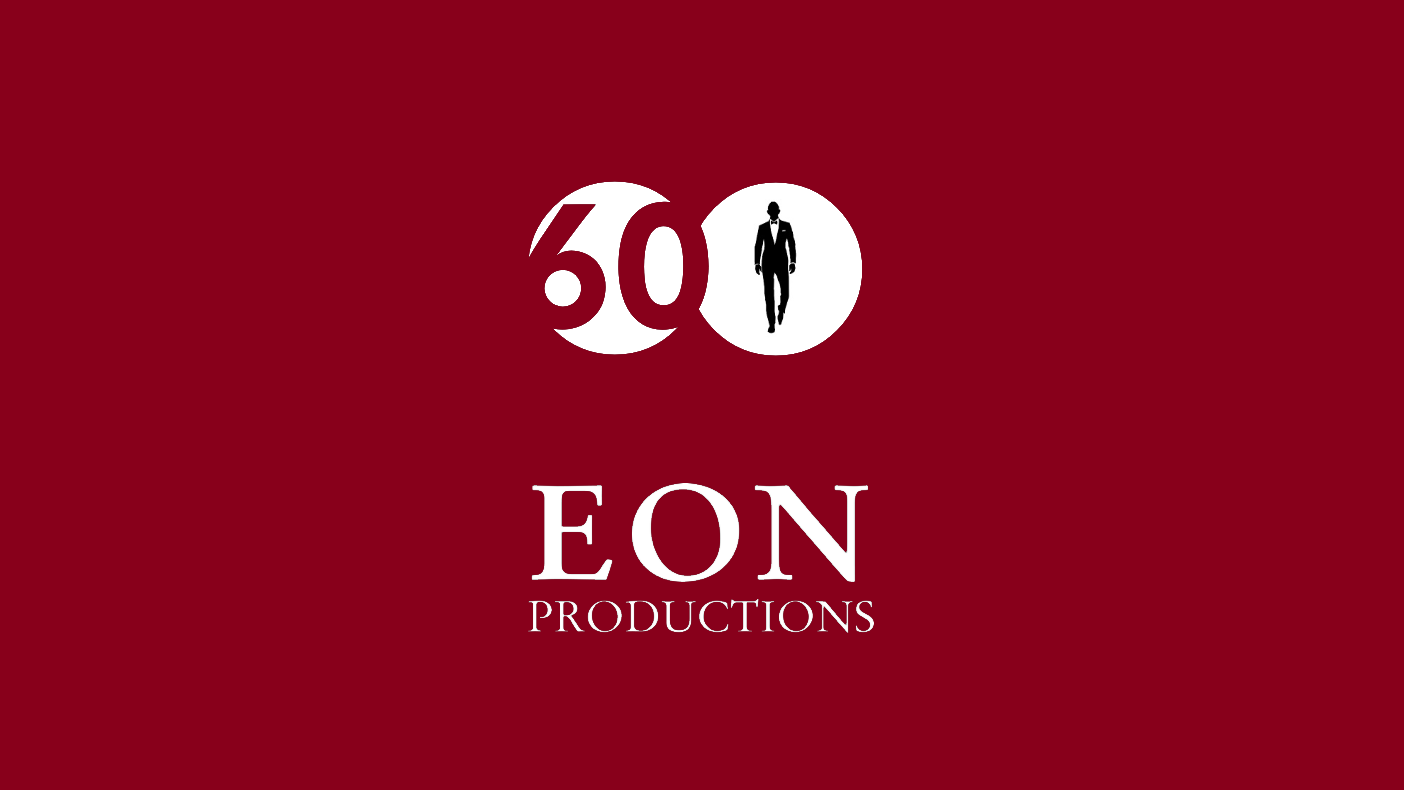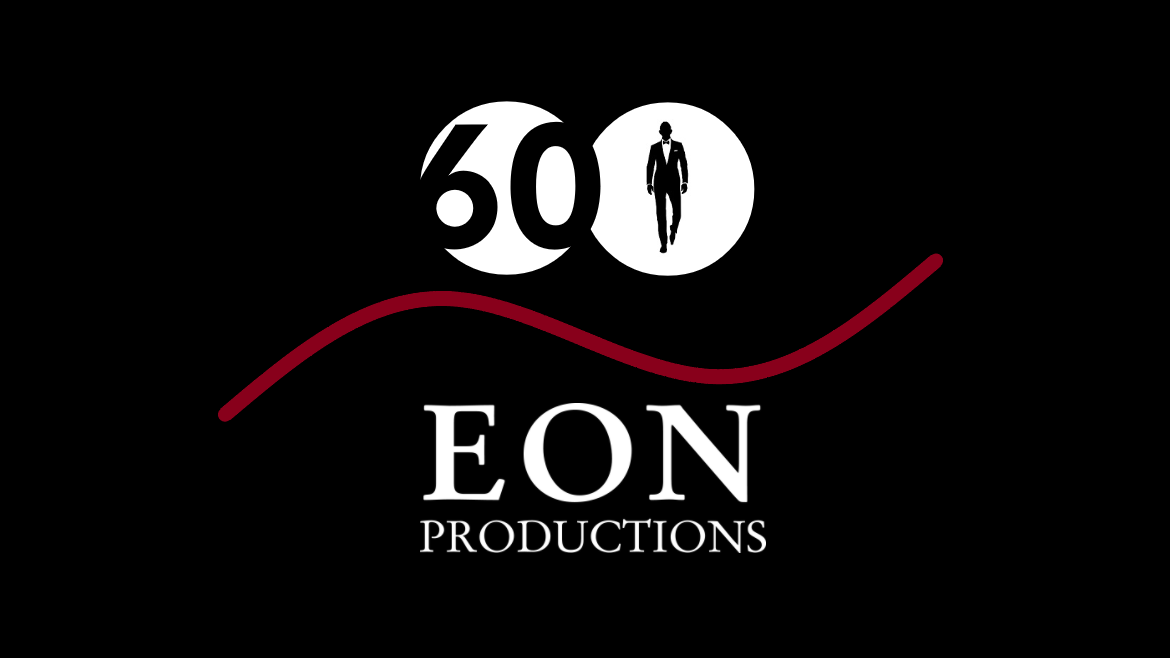
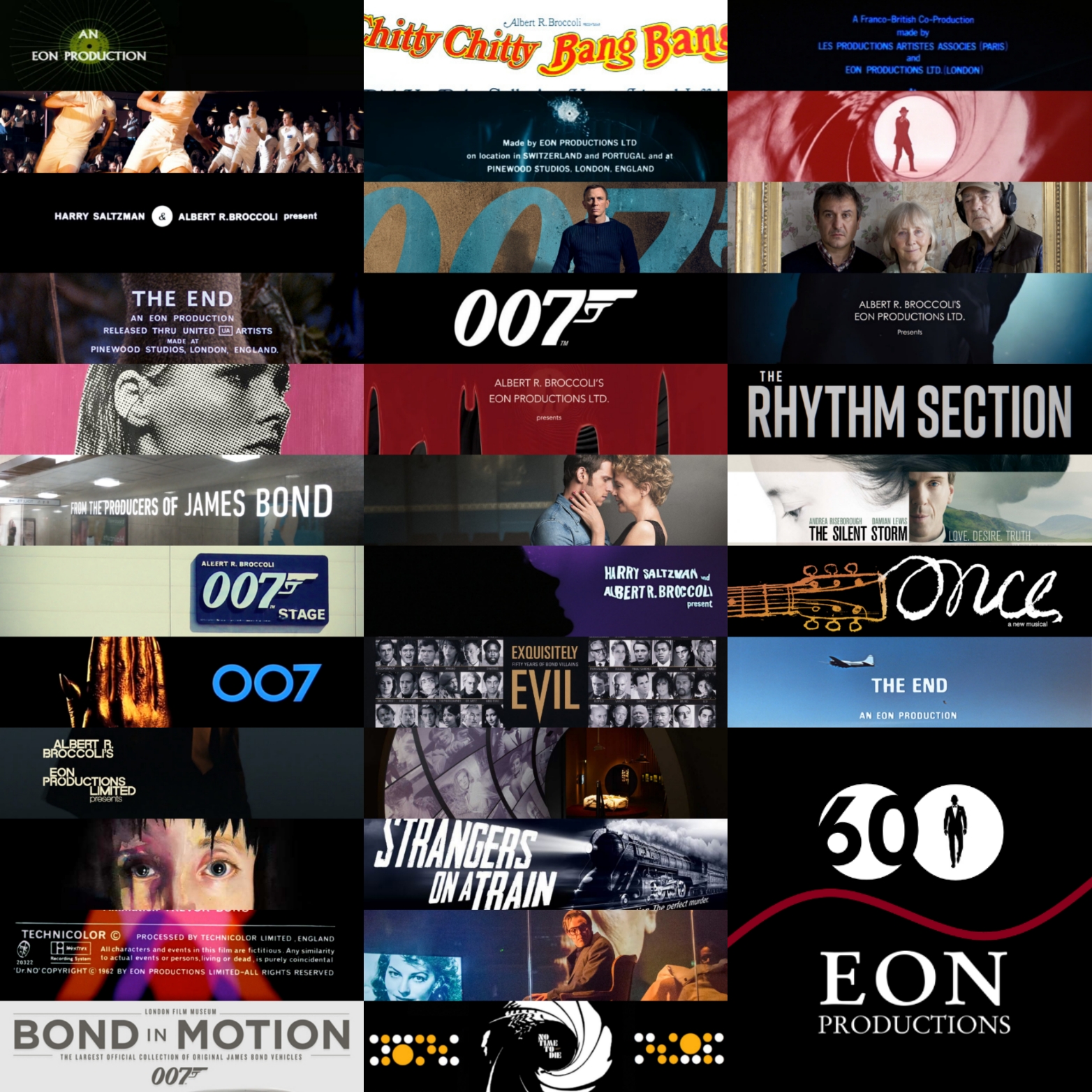
When it comes to cinema and the arts, there are not many independent production companies that are still both companies and independent. There are very few production companies that maintain their family-run traits and control. There are even fewer movie franchises that reach sixty continual years and twenty-five films with maybe not the original captains, but the founding ship’s wheel. Yet, since 1961 London-based EON Productions has done just that.
When film producers Albert R. Broccoli and Harry Saltzman formed an England-based, independent company on July 6th 2021 to be the production wing of their [then] Swiss based corporate entity, Danjaq Societe Associes, the resulting EON Productions has been the engine HQ of James Bond 007 for the sixty years since. A production company that has had many midas touches over many, many eras of global entertainment, cultural change and technological advancements, EON was Broccoli and Saltzman’s factory floor, administrative hub, meeting ground and working family enclave. Sixty years and one change of address later, that has not changed.
Using an office location that Cubby Broccoli had previously shared with previous producing partner Irving Allen and their Warwick Films venture, EON Productions’ first address was the famous 2 South Audley Street. This is where an author called Ian Fleming soon came by for a culture-changing chat, where the inaugural Bond bullet Dr. No (1962) was carved out, where countless infamous actresses had lunch, coffee and a Bond Woman chat, where scripts would be sent for scrutiny, where their next versions would be biked out to relevant parties, where an abundance of speculative Bond artwork would be laid out for final approval, where new Bond film titles would be first pondered on memo paper, where top Hollywood executives would visit with a stretch skywards at the terracotta glories of the building, where early box-office figures would be wired from all over the world, where the phone and fax lines from EON’s Pinewood hubs were always warm, and where at least five James Bonds – and the tens of those that never made it – would nervously check their ties in the lobby. It was never the only working London base for Bond. Broccoli, Saltzman, their professional and their personal lives played out across Mayfair, Curzon and the West End. Various dining haunts, casinos, private members clubs, hotel suites and restaurants scattered across the London map would all be EON outposts. But, 2 Audley Street was always the engine.

EON Productions’ first home – 2 South Audley Street, Mayfair, London / Photos © Mark O’Connell
Curiously for Mr. Bond’s hetero predilections, EON’s first headquarters was slap bang next to The University’s Women’s Club – one of the oldest non-male clubs of its type and one which loved their Bond linkages. It was also a Mayfair address very close to the producers’ central London homes (and not a million steps from some of Ian Fleming’s key abodes) and almost played its own part in a curious Cold War tradition totally unaware of the fictional espionage being plotted merely metres away. My own grandfather was one of EON’s first employees. Having worked for Cubby Broccoli prior to 1961 and the subsequent Dr. No, Jimmy O’Connell was Cubby’s chauffeur and offered all manner of quietly suited support across ‘the firm’, its family, business interests and projects. The very name ‘EON’ was bandied around my family way before I was. They always had the best Christmas cards and parties, letter headings, envelopes and Bond merch. Even the fax numbers seemed cool back in the day. They also had and still have one of the best, laid back working environments for such a towering behemoth of a movie icon.
Whilst many of the EON names who together – and very quickly – forged the creative genome of Bond and nurtured many of the very templates that the brand abides by to this day, EON Productions has never just been in the 007 game. In the same year that the sophomore bullet From Russia with Love (1963) began to warm the phenomenon that Goldfinger (1964) gilded into cinematic immortality, EON made use of its new collaborators (writer Johanna Harwood, editor Peter Hunt, composer Monty Norman, cinematographer Ted Moore and art director Syd Cain) released the Bob Hope comedy, Call Me Bwana (1963). Five years later, Broccoli steered Chitty Chitty Bang Bang onto screens. Whilst under the Warfield Productions banner, Chitty was an EON opus in all but name. Seven years later, Harry Saltzman would part company with Cubby Broccoli. The latter responded by doing what EON always does – re-point Bond for new times. With the construction of The 007 Stage at Pinewood Studios, EON were not only gaining a space on the lot to shoot their iconic The Spy Who Loved Me (1977). They were facilitating a new era of American productions and shining a light on the A-list validity of British crews, designers and crafts-people.

(left) EON’s From Russia With Love (1963) teases its first non-Bond title – 1963’s Call Me Bwana (right).
Three decades after Dr. No and From Russia With Love, EON Productions moved premises in 1992 to a new, equally well-sited Piccadilly home. Slap bang in the heart of Park Lane, its glamourous international jet-set history and a few doors down from where the infant HRH Queen Elizabeth II was first raised by her parents (now the InterContinental Park Lane Hotel), the new EON pad is also surrounded by apt Bond history and locations. The real-life Ambassadeurs Club as depicted in the very scene EON famously first introduces Connery as Bond within was a moments walk round the corner. And officially joining Albert R. Broccoli at the ship’s helm was his daughter Barbara Broccoli and step-son, Michael G. Wilson. Neither were fresh to Bond. Both had literally grown up with the family business. And both had new ideas for new times.
After 1968 and Chitty Chitty Bang Bang it was five decades before EON would produce another non-Bond film. Before that however, the other successful projects with EON’s fingerprints on it saw the House of Bond move into theatre projects – something close to Dana Broccoli and daughter Barbara’s hearts and interests. Aptly beginning with the Sherman Brothers theatrical adaptation of Chitty Chitty Bang Bang at London’s Palladium in April 2002, the onstage titles only gathered pace. One of the pet projects Dodi Fayed – and friend of Barbara Broccoli – helped nurture was Hugh Hudson’s Oscar winning, Chariots of Fire (1981). In 2012 and amidst the red, white and blue year of Skyfall, The Queen’s Jubilee and the London Olympiad, EON rode that English wave with a successfully and cleverly staged theatre play of Chariots of Fire. That was followed by the Broadway and West-End sleeper hit Once in the same year. In the years since Daniel Craig brought Othello to New York in 2016, The Band’s Visit and The Country Girls were revived in 2017, Love Letters (2017) and Strangers on a Train returned Hitchcock to the West End in 2018. One production paused by the 2020 pandemic was Sing Street (2020). Intending to open on Broadway and produced by Barbara Broccoli, Frederick Zollo and Michael G. Wilson, Sing Street is based on the hit 2016 film set in 1980s Dublin. The new opening night now has its singing sights on Winter 2021.
One of the most striking EON theatrical works was 2017’s The Kid Stays in the Picture. Based on Robert Evans 1994 autobiography with some of the same invention and flair of the effortlessly rich 2002 documentary that followed, The Kid Stays in the Picture detailed the palm-tree lined life of former B-list actor Robert Evans as he struts, marches and sometimes stumbles into A-list producer territory at Paramount Studios with some of the defining movies of post Sixties America on his CV. The project was developed also by Barbara Broccoli and Michael G. Wilson – with the former especially overseeing family friend Evans whose spirit is all over the quite stunning production.
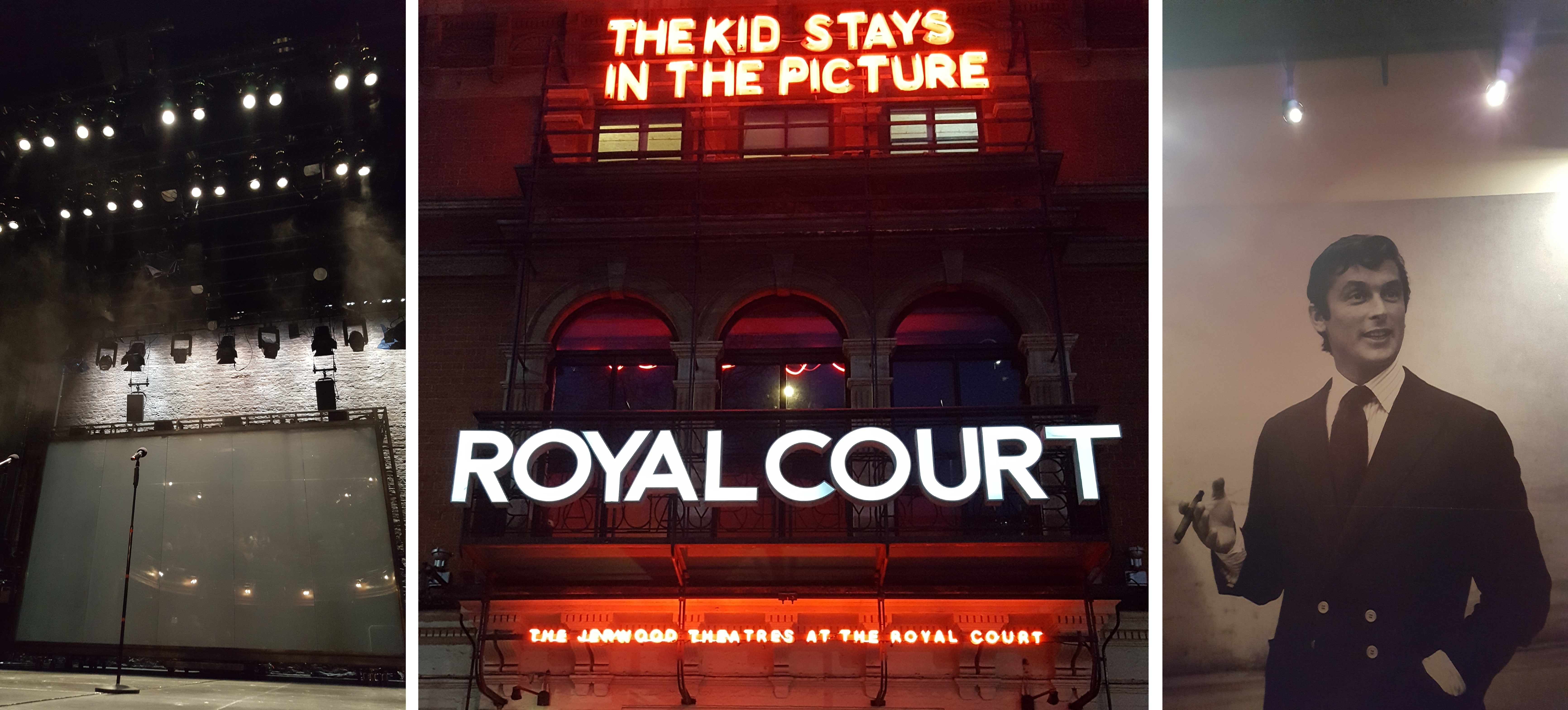
The Kid Stays in the Picture at London’s Royal Court / Photos © Mark O’Connell
However, for as many productions with EON’s name on the marquee, there are lesser known theatre works, off-Broadway hits and indie minded new pieces have also been quietly supported by Barbara Broccoli and Michael G. Wilson. Fleabag and the very stage production that propelled actor-writer Phoebe Waller-Bridge to the mainstream – which then saw her earmarked officially when EON tapped that sharp writer’s mind to work on No Time to Die (2021) – was co-produced by Broccoli onstage before and after it became a TV hit. A Steady Rain (2017), Catwalk Confidential (2007) and more have all also had that EON guidance.
To mark Bond’s golden anniversary and the launch of 2012’s Skyfall, with the guidance of EON’s Chief Archivist Meg Simmonds they opened Designing Bond – 50 Years of James Bond Style at London’s Barbican Centre, Bond in Motion at the Beaulieu Motor Museum in the UK’s Hampshire and Exquisitely Evil – Fifty Years of Bond Villains at Washington DC’s International Spy Museum. Previously many of the cars, costumes and props had once filled EON’s The World of 007 – a 1997 touring exhibition.

EON’s Bond In Motion at the London Film Museum / Photos © Mark O’Connell
In March 2014, Bond in Motion moved to the London Film Museum. Marked by a top notch launch that gathered production designers Ken Adam, Peter Lamont and Dennis Gassner, various Bond actresses, actors, stunt drivers and creatives across the decades as well as EON alumni new and old, Bond In Motion soon became an extended clubhouse for 007’s launches, in-house meetings, press events and new Bond film promos. This was followed in July 2018 by a different way of celebrating 007 and Bond movies. Built inside the summit of Gaislachkogl Mountain in Sölden, 007 Elements is a new era James Bond cinematic installation for Austria and Europe. Sölden was chosen as the home of 007 Elements after the ice restaurant located there featured in Spectre (2015) as the Hoffler Klinik. The installation also feature other titles in the sixty year cinematic timeline of Bond, James Bond. Later that year, Manhattan’s Spyscape espionage museum opened in partnership with EON.
In June 2019, EON embarked upon one of their largest Bond endeavours. Taking 2006’s Casino Royale and marrying it up with the immersive movie minds of Secret Cinema, EON collaborated on Secret Cinema presents Casino Royale. A rich, different and highly popular fixture on the summer 2019 calendar for Londoners, the event’s run was extended and saw eager fans relishing the chance to wallow in a real-life presentation of Daniel Craig’s inaugural bullet in a reimagined, mixed zone experience the size of The 007 Stage.
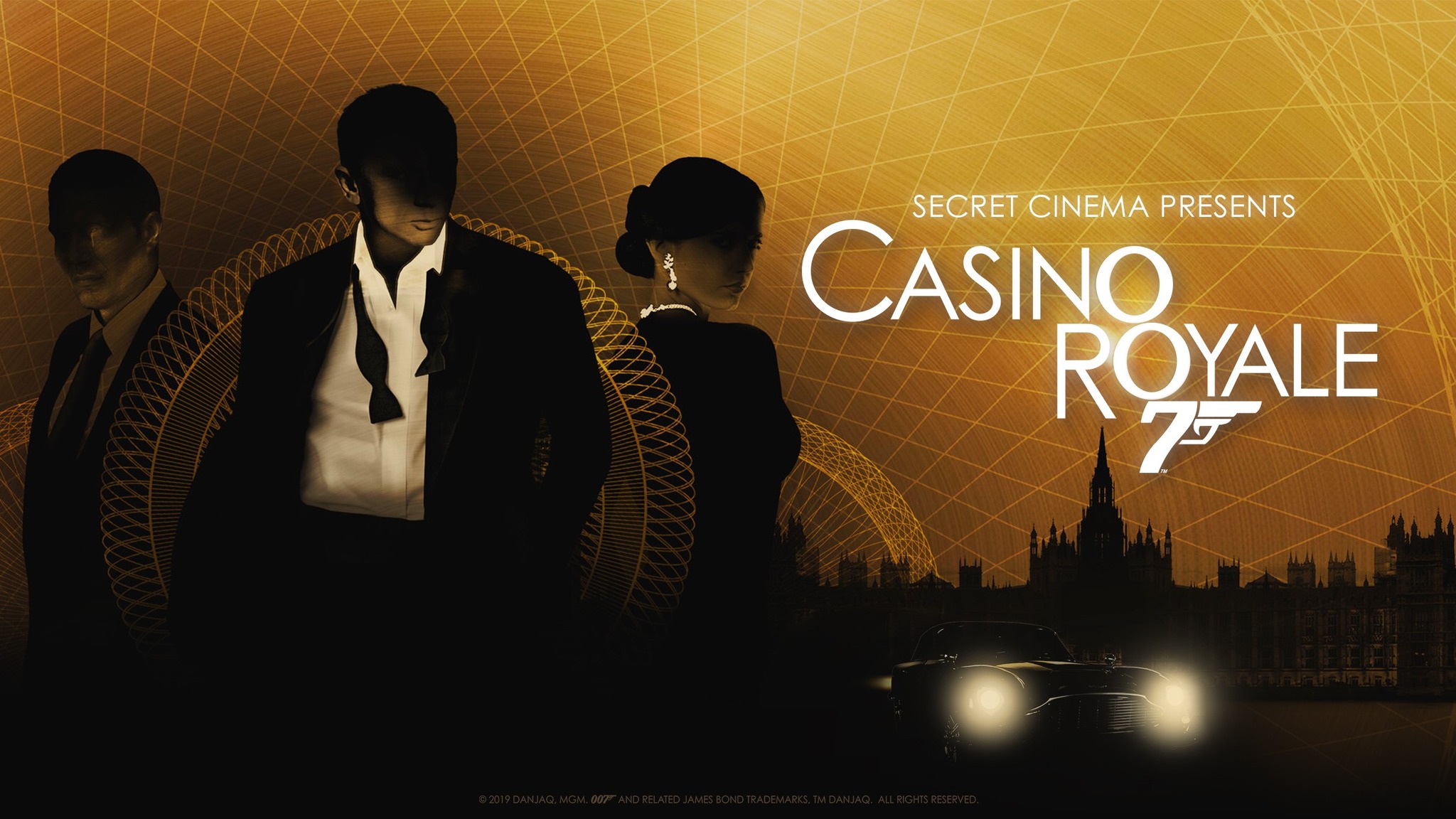
However, and as Secret Cinema presents Casino Royale returned the film to the UK box-office for the summer of 2019 proved, EON Productions has always been a beast of cinema first and foremost. In the years since Barbara Broccoli and Michael G. Wilson returned Bond to the pop-culture psyche with 1995’s GoldenEye, they have also nurtured, supported and spotted a series of movies underlining a sense of story, a sense of a director’s voice, a sense of a female cinematic voice and an independent spirit that does not always have box-office gamechanger on its agenda. The Silent Storm (2014), Radiator (2014), Nancy (2018) and The Rhythm Section (2020) are all female stories often directed by women with Barbara Broccoli and EON taking a willful stance to bring more than just guns, Astons and Bond’s machismo to our movie screens. Ear for Eye (2021) starring Lashana Lynch (No Time to Die) is currently in post-production.
Perhaps the strongest title to emerge from EON’s non-Bond movie stable in recent years is Film Stars Don’t Die in Liverpool (2017). Based on Peter Turner’s (Jamie Bell) own short-lived, but long-loved relationship with Hollywood actress Gloria Grahame (Annette Bening) and the 1987 memoir it encouraged, Film Stars is a brilliantly pitched exercise in character and the ones we present. It curiously also saw EON produce a film whose lead character and story was directly from the old Hollywood era, names and egos that Cubby Broccoli knew, aspired to and worked with as he too moved to England and set up life as a British film producer. Like all the non-Bond titles, Film Stars gave many EON alumni and artists a chance to collaborate away from the Astons and Vespers – a lesser noted draw of these films for those desperate for two Bond movies a year. They allow a production company with big, but sometimes clipped, typecast wings to find, nurture and collaborate with new talents, colleagues and associates. That is only ever for the good of Bond, James Bond. And his future.
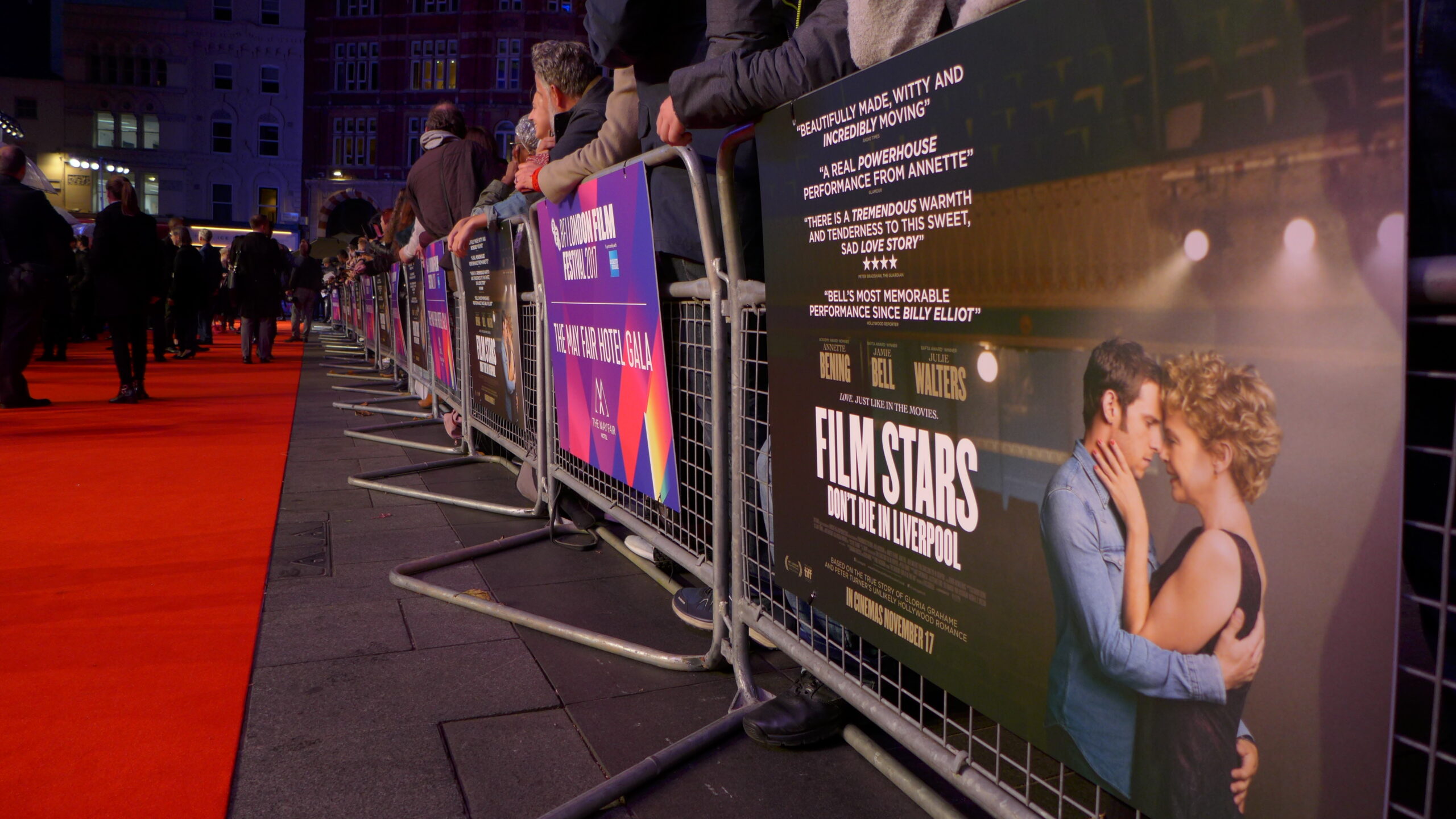
Film Stars Don’t Die in Liverpool’s premiere at the London Film Festival, October 2017 / Photo © Mark O’Connell
Perhaps the greatest story still never told is that of EON itself. It would be a story beginning with two contrasting post-war producers desperate to bring some Hollywood luck to British shores and how a chap of the empire called Ian Fleming helped them both change the course of movie history in a changing world. It is about mahogany drawing boards flanked by cigars, open doors and slammed doors, the fixtures of a family that remembers, the cocksure agents and wise stalwarts, the budget worries, the sweaty studio brass, the forgotten writers, the returning writers, the late night airport runs, the colorful publicists, the flower girls and premiere night sons who become vital Bond production adults, a legal wrangle that nearly ended it all, the colourful characters who cut everything fine, the cigarette smoke, the press call morning prep, the ringing journalists, the demo tapes, the audition tapes, the disagreements about singers, the temporary typists who end up staying on, the dashes to Pinewood Studios, the kindness and support shown when never asked for, the chauffeurs, a company car called CUB 1, the staff marriages, the basement screening rooms, the Mayfair stairwells, the studio fires and upgrades, the accountants and loyal front of house crews, the old-school traditions that work, the sense of bespoke and doing things right, six once-nervous men called Sean, George, Roger, Timothy, Pierce and Daniel, the next guy to don the tux, get a pass code and have to check his tie anxiously on the stairs, and the two siblings who underlined that everything or nothing mantra when they did the impossible and re-steered that captain’s wheel.
And of course Bond, James Bond.
Happy 60th EON Productions and the sixty year family that underpins every frame of Bond.
EON PRODUCTION’s No Time to Die will be released from September 30 2021. Goldfingers crossed.
Mark O’Connell is the author of Catching Bullets – Memoirs of a Bond Fan.
